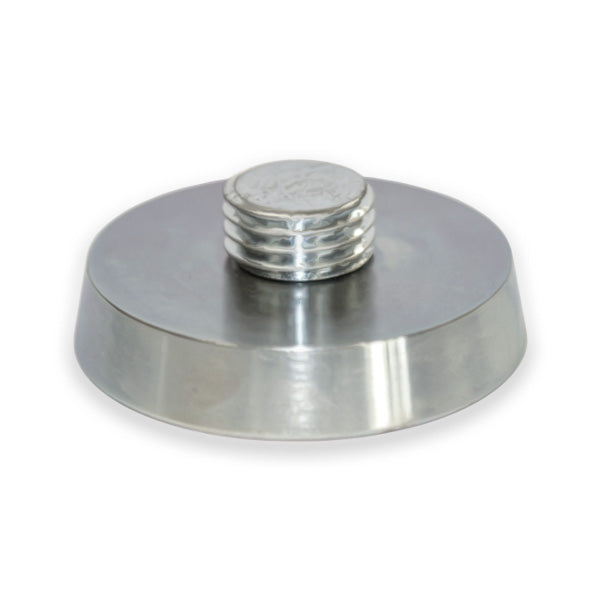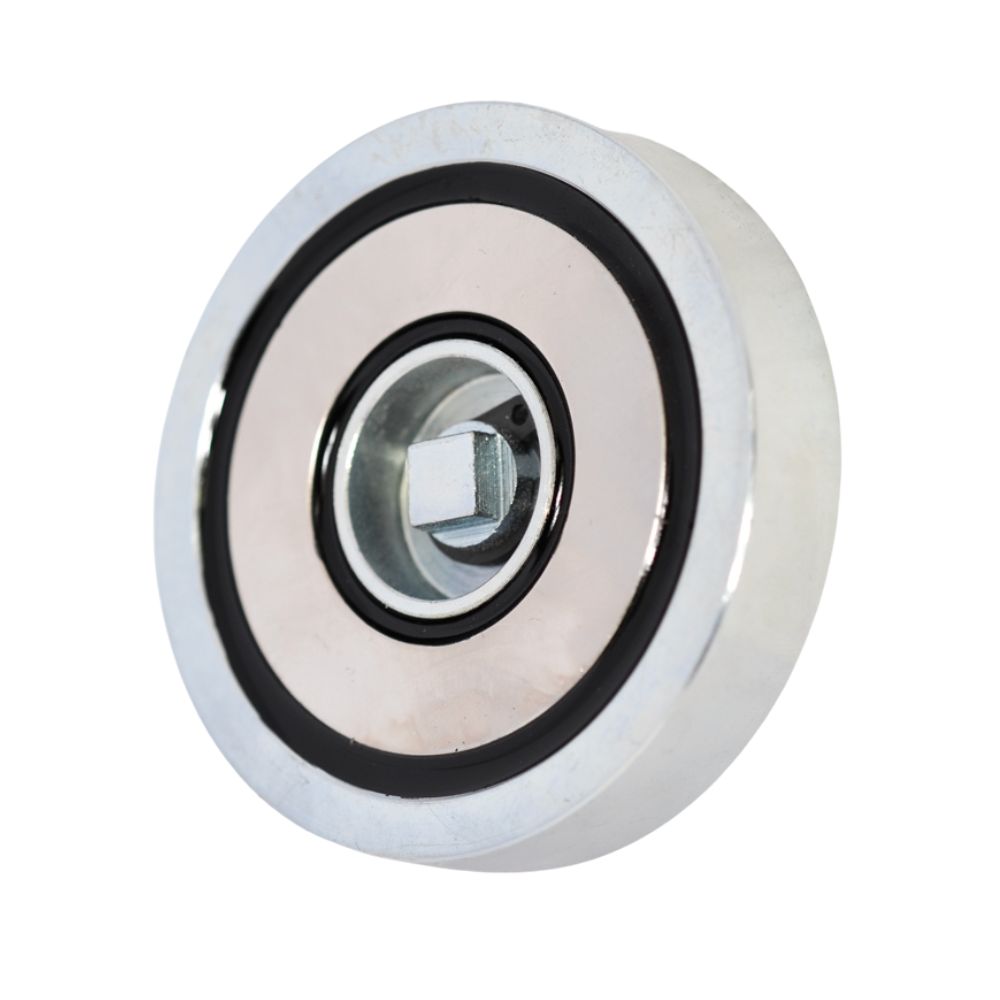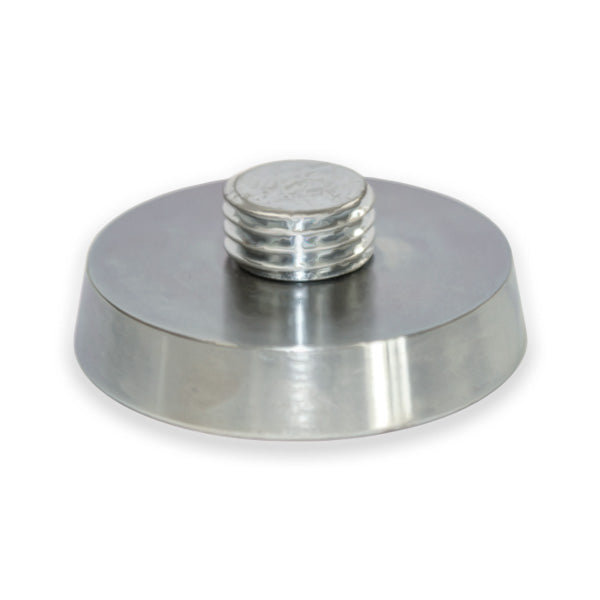Neodymium Magnetic Fixing Plate – D60mm | M20 Thread
Product code: MFP20


Prices are GST Incl.
Request a Quote for Bulk OrdersAustralia's Leading Supplier
Shipping Worldwide*
30 Day Returns
Same Day Dispatch*
Magnetic Product Description:
This Neodymium Magnetic Plate is specifically designed for securely attaching sockets to steel formwork. With a 60mm diameter and an M20 thread, it boasts an impressive pull force of 50kg and can be easily identified by its unique AMF Magnetics Part Number MFP20.
Uses for our Neodymium Magnetic Plates:
Steel formwork that moulds prefabricated concrete sections is more common around large scale construction projects because of its strength, impervious nature and the ability to reuse the steel mouldings on the same project or future constructions. Although the initial cost of steel is high compared to timber, the cost is recouped over time in better durability and longer service life and also saves money by reducing manual labour costs and overall construction time. Magnets help to embed necessary fixtures inside the concrete structure correctly. Fixing Plate magnets bond with steel formwork to hold hoses, electrical conduit or lifting sockets in place while the concrete is poured. After completion, they are easily removed. Attachment points between the plate and steel formwork should be cleaned and in total contact to prevent the bond weakening and to stop wet concrete from penetrating the bonded magnetic surfaces.
This device contains powerful Rare Earth magnets that keep the plate in the required position on steel mouldings or forms during the casting process. Lightly oiling the casing will ensure its easy removal and make it reusable and able to be reallocated to another project or site. Various sizes are available to suit a range of concrete panels.
No FAQ available

NB: Ranges are indicative for product category, please check individual products for specic values within that range.



The most common coating for Neodymium magnets is Nickel + Copper + Nickel (Ni + Cu + Ni). This coating offers the magnet relatively good protection from corrosion and passive applications. If the magnet will be exposed to moisture or liquid then consider the use of an organic coating such as Epoxy. A hard wearing coating, Epoxy is suited to applications where the magnet will come under some friction or knocking.

Magnets are readily available in Blocks, Discs, Cylinders & Rings. AMF Magnetics specializes in the supply of short-run prototype magnets including Arc Segments, various magnetic orientations etc. If you need a magnet size that we don't carry in stock, submit a Design-a-Magnet enquiry for a quote on your custom magnet design.

Neodymium magnets are offered in several different grades. The first section N30-54 has an operating temperature of up to 80 degrees. Most of our stock only goes up to N38. The second section, denoted with the "M" prefix after the grade has an operating temperature 100 degrees. After this the grades are "H", "SH", "UH" & "EH". In order for the magnet to withstand a higher operating temperature, during production more of the raw material PrNd is incorporated as these elements have a naturally occurring resistance to high temperatures.
Magnetic Product Description:
This Neodymium Magnetic Plate is specifically designed for securely attaching sockets to steel formwork. With a 60mm diameter and an M20 thread, it boasts an impressive pull force of 50kg and can be easily identified by its unique AMF Magnetics Part Number MFP20.
Uses for our Neodymium Magnetic Plates:
Steel formwork that moulds prefabricated concrete sections is more common around large scale construction projects because of its strength, impervious nature and the ability to reuse the steel mouldings on the same project or future constructions. Although the initial cost of steel is high compared to timber, the cost is recouped over time in better durability and longer service life and also saves money by reducing manual labour costs and overall construction time. Magnets help to embed necessary fixtures inside the concrete structure correctly. Fixing Plate magnets bond with steel formwork to hold hoses, electrical conduit or lifting sockets in place while the concrete is poured. After completion, they are easily removed. Attachment points between the plate and steel formwork should be cleaned and in total contact to prevent the bond weakening and to stop wet concrete from penetrating the bonded magnetic surfaces.
This device contains powerful Rare Earth magnets that keep the plate in the required position on steel mouldings or forms during the casting process. Lightly oiling the casing will ensure its easy removal and make it reusable and able to be reallocated to another project or site. Various sizes are available to suit a range of concrete panels.
No FAQ available

NB: Ranges are indicative for product category, please check individual products for specic values within that range.



The most common coating for Neodymium magnets is Nickel + Copper + Nickel (Ni + Cu + Ni). This coating offers the magnet relatively good protection from corrosion and passive applications. If the magnet will be exposed to moisture or liquid then consider the use of an organic coating such as Epoxy. A hard wearing coating, Epoxy is suited to applications where the magnet will come under some friction or knocking.

Magnets are readily available in Blocks, Discs, Cylinders & Rings. AMF Magnetics specializes in the supply of short-run prototype magnets including Arc Segments, various magnetic orientations etc. If you need a magnet size that we don't carry in stock, submit a Design-a-Magnet enquiry for a quote on your custom magnet design.

Neodymium magnets are offered in several different grades. The first section N30-54 has an operating temperature of up to 80 degrees. Most of our stock only goes up to N38. The second section, denoted with the "M" prefix after the grade has an operating temperature 100 degrees. After this the grades are "H", "SH", "UH" & "EH". In order for the magnet to withstand a higher operating temperature, during production more of the raw material PrNd is incorporated as these elements have a naturally occurring resistance to high temperatures.











